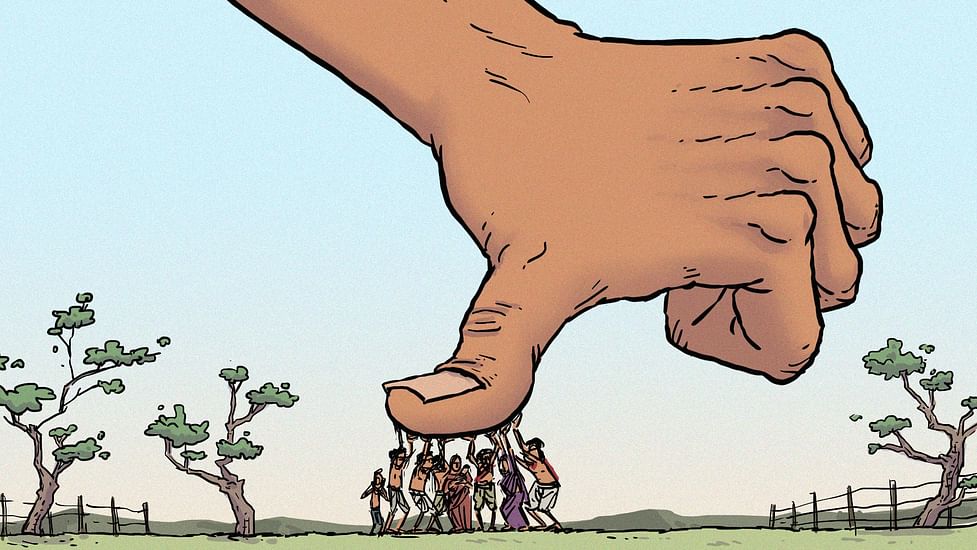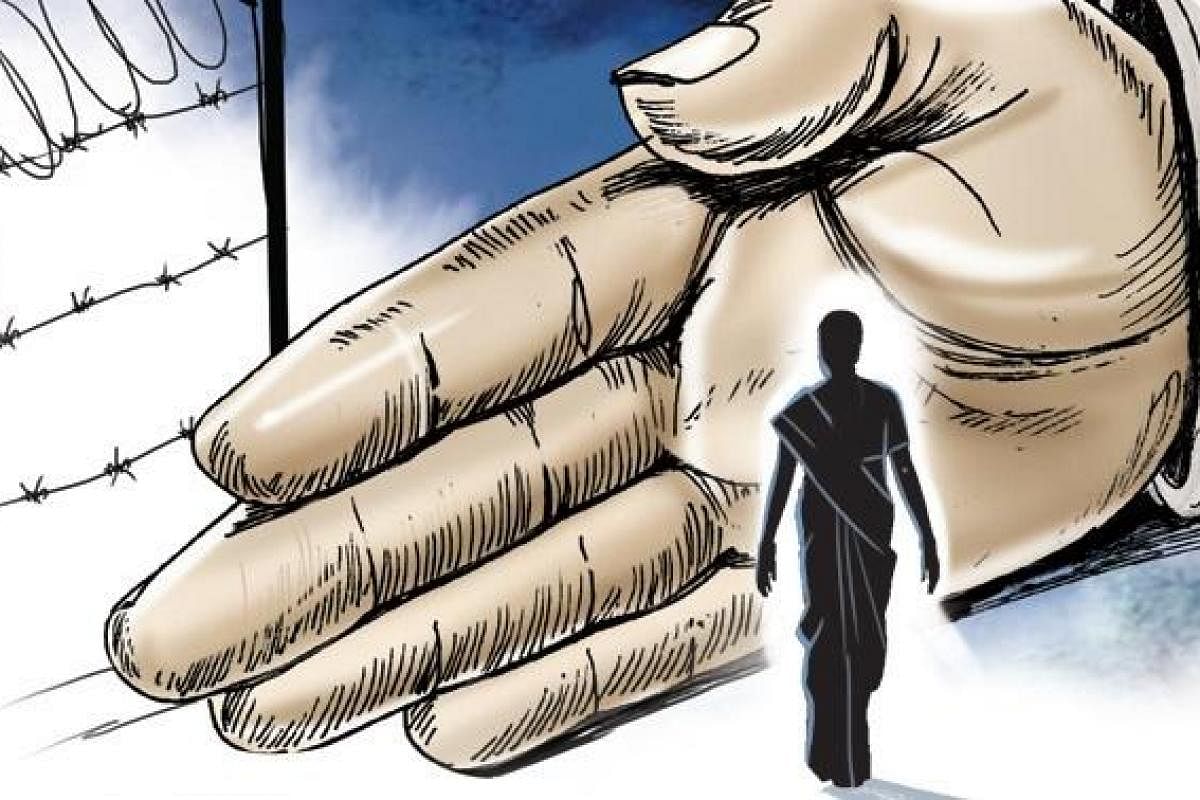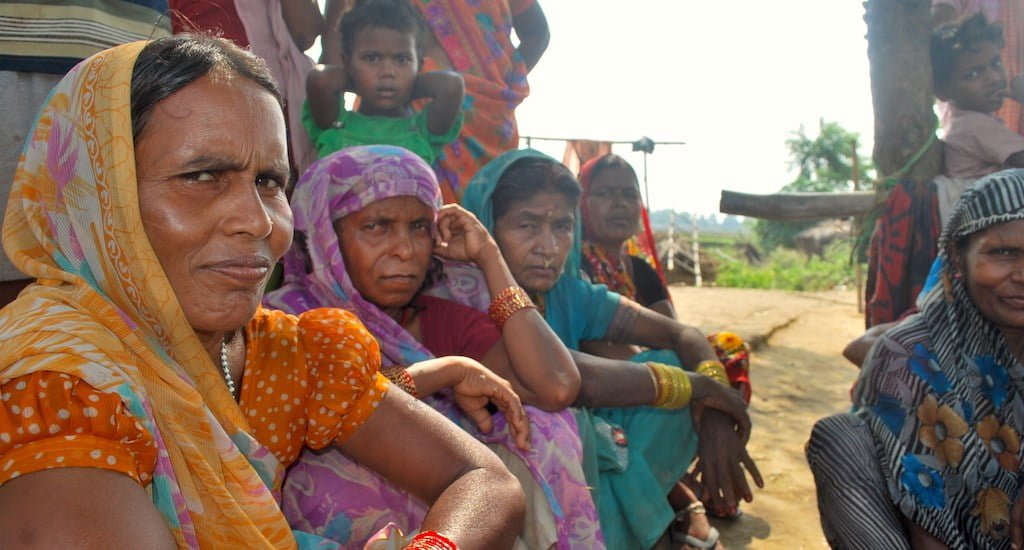Social exclusion can be defined as a phenomenon when certain social groups are denied equal and unbiased access to the rights and privileges that are enjoyed by others. The perpetuation of social exclusion in India is sustained by the caste hierarchy, wherein the marginalised groups situated at the lowest rungs of the social ladder bear the brunt of its consequences. The socio-psychological consequences of denying equal rights based on group membership and employing discriminatory and violent practices are rampant in India and globally.
The socio-psychological consequences of denying equal rights based on group membership and employing discriminatory and violent practices are rampant in India and globally.
Such actions indirectly undermine the fundamental human need for a sense of belonging and hinder progress towards human development. Regions that are classified as economically and socially disadvantaged experience a lack of resources and opportunity, leading to greater marginalisation and inequality. The limited number of policies implemented in this domain are predominantly channeled through the hierarchical structure of the privileged upper caste. This group possesses the necessary means and comprehension to effectively engage with the advantageous elements of the policy. Conversely, the marginalised communities, who are deprived of information and representation, encounter obstacles when attempting to navigate the system.
This phenomenon renders the entire system non-inclusive and biased in favour of individuals favoured by the casteist authority. The act of excluding certain individuals based on their caste gives rise to a gap that leads to social and economic inequities. These gaps, in turn, contribute to poorer psychological outcomes as a consequence of systemic injustice. Regrettably, policymakers and academics tend to overlook these experiences to a significant extent. In the context of India, the prevailing viewpoint held by upper caste groups perpetuates the notion that caste-based discrimination, mistreatment, and inequity are historical relics, impeding the progress of researchers in conducting comprehensive inquiries and limiting the attention given to these issues by policymakers.
Inequality of resources
The social stigmatisation experienced by lowered caste groups, due to the distinctive nature of their caste identity, renders them more susceptible to social exclusion throughout several spheres of society. Individuals in this particular group experience the greatest negative impact resulting from disparities in the distribution of resources, entitlement to rights and opportunities to dominant groups. They face many forms of segregation, both physical and social, which limit their freedom, restrict their ability to participate fully in society, and deprive them of several social benefits. While exercising their entitlements and prerogatives, individuals frequently encounter instances of discrimination and violence rooted in the caste system.
The prevalence of human rights breaches in Indian society is a longstanding issue, and there remains a significant dearth of representation across spheres. The profound deprivation and poverty experienced by marginalised social groups, who have historically endured social exclusion and discrimination, have been acknowledged as leading to inequitable exclusion or inclusion, resulting in limited access to income-generating resources, employment opportunities, and essential social services such as education, healthcare, nutrition, and housing.
Furthermore, this phenomenon gives rise to disparities in the availability of civil, religious, and cultural rights, as well as political rights, leading to unequal involvement in governance. Consequently, these circumstances contribute to elevated levels of poverty and diminished human development within marginalised populations. India’s ongoing economic shift towards privatisation has created a pathway for individuals belonging to privileged castes and classes to acquire skills through their money power and higher social position. Therefore, individuals from less privileged communities find it challenging to compete due to the burdens associated with their historical background and social identity.The adoption of societal identities exacerbates the perpetuation of preconceptions and prejudices, hence impeding communities’ ability to traverse unfavorable systems and maintain their well-being.
Exclusion in educational institutions
The deliberate marginalisation of those belonging to lower castes, and the subsequent suppression of their voices, serves as a conscious strategy to downplay the significance of their painful experiences. Lower-castes are disproportionately affected by this phenomenon, even from a tender age. Instances of this phenomenon can be observed in prestigious institutions like the Indian Institutes of Technology (IITs) as well as in campuses that are commonly regarded as liberal, such as prominent central universities. The prevalence of institutionalised harassment experienced by young individuals from lowered castes is growing more widespread, with news outlets often attributing the resulting fatalities to factors such as “depression” or “academic pressure.”
Despite the community’s pleas, no investigation is initiated. The individual belonging to a lower caste who underwent competitive tests, although facing social hurdles, experiences a sense of self-doubt regarding their abilities. Furthermore, they become aware of their impoverished circumstances as a result of encountering discrimination and abuse subsequent to their admission. The phenomenon of students experiencing isolation as a result of caste-based discrimination can be understood as a manifestation of social exclusion. This form of exclusion carries the potential to heighten the likelihood of mental health problems among affected individuals. Such mental health concerns might arise from the stress caused by limited access to opportunities, challenging living conditions, and an unfavourable political climate.
The aforementioned phenomenon gives rise to challenging coping mechanisms and has a detrimental effect on an individual’s self-esteem, thereby discouraging the collective efforts of the community to improve their quality of life. Lower caste groups exhibit a dearth of experiential opportunities within their surroundings, leading to psychological impairments and a lack of effective coping mechanisms to navigate their disadvantaged social status. These groups experience deficiencies in multiple cognitive qualities, along with a prominence of affective issues. The aforementioned circumstances are mostly ascribed to the destitute environmental conditions experienced by lower-caste communities, which frequently leads them to get trapped in a cycle of social exclusion.
How accessible is mental-health?
The primary avenue for addressing mental health and promoting overall well-being is through therapeutic interventions. However, it is important to acknowledge that the composition of the therapy profession is predominantly composed of individuals from higher castes. This demographic disparity exacerbates the existing communication gap and hinders the establishment of effective bridges to mental well-being for marginalised communities and those belonging to lower-castes. The recognition of the impact of casteism and patriarchy on well-being and mental health is frequently absent, along with the opportunity to discuss the intergenerational trauma that has been inherited within the disadvantaged communities.
Moreover, the exorbitant cost associated with therapy sessions serves as a significant barrier, rendering them unavailable to a substantial portion of the population.
Therefore, mental health and associated matters are only available to individuals belonging to privileged castes, while caste-based problems are disregarded and erroneously attributed to an individual’s perceived inadequacy rather than recognising the detrimental impact of casteism on personal development. Moreover, the exorbitant cost associated with therapy sessions serves as a significant barrier, rendering them unavailable to a substantial portion of the population. The prevailing discourse pertaining to well-being and mental health has undergone a process of commodification, exhibiting distinct characteristics aligned with capitalist principles. This condition results in the exclusion of a significant portion of the populace and hinders the adoption of an inclusive approach to caregiving.
Neglect and exclusion of women
The current approach to mental health in India has not yet been fully embraced within the framework of Indian cultures and communities. Mental health issues are often perceived as disruptive behavior rather than a matter of general concern, leading to the attachment of various superstitions and stigmas. Consequently, individuals experiencing mental health challenges are often labeled as “mad” rather than receiving appropriate care and support. The witch culture in India similarly revolves around the perception of black magic and witchcraft as malevolent psychological disorders resulting from demonic influence.
Consequently, women predominantly bear the brunt of these presumptions and unfounded accusations. The individuals who are stigmatised as witches typically come from either Adivasi or lower caste backgrounds. The phenomenon under discussion represents the convergence of patriarchal norms with caste-based hierarchies, resulting in the stigmatisation and mistreatment of women belonging to marginalised castes. Women belonging to lower castes face dual forms of discrimination due to their caste affiliation and gender. These individuals are frequently disregarded and subjected to discriminatory practices, resulting in disparities in health outcomes.
Therefore, there exists an interconnectedness between gender and social marginalisation. Frequently, women encounter social exclusion from mainstream opportunities. The patriarchal structure inherent in society has resulted in a sense of exclusion experienced by women, leading to limited access to many prospects. Additionally, the phenomenon of double exclusion occurs when caste becomes a factor in this process. In instances where a woman is a member of a minority group, both caste and gender contribute to the perpetuation of social exclusion to varying degrees. It is imperative to comprehend the ramifications of social exclusion on an individual’s mental well-being, since it engenders a significant discrepancy within the population in terms of mental health. This gap is directly attributable to the presence of inequitable systems such as casteism and patriarchy.










